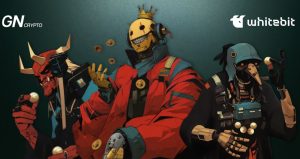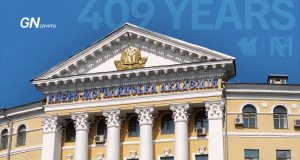NFT. 10 features that make the technology special

How many important and valuable qualities could be behind images of a cryptopunk or a “bored ape”? Gagarin News has counted at least 10.
On this page
So, we know the basic difference between “regular” cryptographic tokens and non-fungible NFTs: the first ones are used to exchange for the internal functionality of a particular platform, and, in contrast, the second ones act as a “certificate” confirming the ownership of the digitized object.
Society perceives cryptocurrencies as investment objects, while NFTs are considered collectibles. Both are consistent with the holder’s intention to make a profit. But the principal value of the NFT lies behind it, while the value of the “crypto” is embedded in it.
Uniqueness
Each NFT has a unique identifier. This means that no other NFT can validate the rights to the same object. This identifier is what implements the “non-fungibility” of NFTs.
For example, if you sell your NFT to someone and then repurchase it a year later, you will get the same NFT. If you do this with any cryptocurrency, the probability that you can buy the same “physical coin” is almost zero: your counterparty could sell, spend, and buy tokens from his wallet several times. So, you will only get the same amount of coins, but not the same tokens, because they are entirely fungible with each other. It’s just like regular money: your debtor will pay back the $100 s/he borrowed, and you will be even, but the dollar paper will probably not be the same as the one you gave him/her. Nor will you refuse to accept $100 in two $50 bills.
Verifiability
Everyone can be sure they are dealing with a real, authentic NFT. Thanks to the blockchain, the entire history of the token is verifiable, from its mint to the dates of transfers, with the actual prices and wallet addresses at the time.
Thus, whichever NFT you choose – you can always check if it is the token you want to buy. NFT totally eliminates the problem of counterfeiters in our usual fiat world, where they can fake money, diplomas, certificates, or fleece you like a sheep on a phishing site.
Programmability
NFTs are issued via smart contracts, which is a self-executing piece of code. It regulates and enforces all the rules by which token transactions are made. It is technically impossible to violate the terms of a smart contract.
The platform on which the NFT is minted can set any smart contract terms based on the goals and objectives of the collection. But then, once the token is minted, the smart contract only works that way, not otherwise. This is the one case where “the law is not retroactive.”
Standardization
Just imagine how complicated people’s lives would be if there were no standards for fuel, radio frequencies, or operating voltages for appliances! For example, a washing machine made in South Korea might not work in other countries if the whole world had not previously reached a consensus about 220 volts in sockets.
The existence of standards for NF tokens makes it possible to have no boundaries for viewing, storing, or transmitting them. And, with the increase in the number of NFT platforms, their unique project standards inevitably appear. But that’s not a problem because all popular blockchains already have convenient and relatively secure bridges between them, allowing for the seamless exchange of the native tokens needed to buy NFTs.
Composability
NFTs can interact with other smart contracts. At today’s level of development in the sector, this feature allows users, for example, to take cryptocurrency credits on specialized lending platforms by providing their NFTs as collateral.
Surely the ability to compose NFTs will also find application in entirely new areas of the economy, where the potential for NFTs can be enormous. This includes law, logistics, the education system, cadastre, and many others.
Data portability
In this regard, NFT is one of the symbols of Web3. Users’ personal data (and personal data no longer include just names/passports/phone numbers, but also files, browser history, and even more so digital assets) do not have to be transferred to third-party services to be able to interact with them (with all the attendant risks of compromise, loss, or hacker attacks) anymore.
Nowadays, all information can be stored on the user’s side. Modern cryptocurrency wallets support NFT, and, thanks to the portability feature, token owners can easily change the used services when they are not satisfied with them (for example, because of maintenance costs, intrusive advertising, or something else).
Decentralization
The main advantage of decentralized finance is that the interests of the participants have maximum immunity to any censorship. For instance, if your web domain server goes down, nobody can access the information posted on that site. When millions of computers on Earth act as a server simultaneously, only an alien attack can break this zen.
Not all cryptocurrency projects are decentralized. The most recent example was the sanctions against the Tornado Cash service when centrally issued cryptocurrencies were blocked in accounts by demand of state regulators.
NFTs are decentralized to the extent that you don’t use centralized services (like the OpenSea Marketplace). In this regard, the “Not your keys, not your bitcoin” thesis is absolutely applicable to non-fungible tokens as well.
But, in any case, a record of all legitimate NFT transactions is stored on a distributed blockchain. So, you don’t need a notary, permission, or granny’s connections at the housing office to view that history.
Transferability
The NFT smart contract provides the ability to exchange tokens between buyers and sellers even when they have different security settings on each counterparty’s side.
Due to this feature, NFTs are already actively used today to tokenize event tickets, gift certificates, collectibles, digital art, domain names, play-to-earn bonuses on gaming blockchain platforms, and many other similar use cases.
However, it is necessary to mention the universality of NFT technology. When a user needs precisely the opposite effect (impossibility of transmission), special NFT formats are developed allowing to verify the authenticity of the information encoded in it, but not allowed to sell it (for example, in cases of confirmation of professional skills, achievements, recommendations, or remote provision of an education diploma).
Long-term immutability
There are no options for modifying or transforming an NFT smart contract deployed on a blockchain. Indeed, there is no way to delete it by saying, “that’s how it was”. You can’t change your NFT even if you manage to possess it illegally.
Perhaps this feature could be the second most important, after the non-fungibility of NFT. If bitcoin is the reference store of value, then NFT is the perfect “safe” for information.
Open-source code
After the Facebook scandal, which admitted the hidden use of the personal data of its users, the closed (in terms of code) systems have been permanently compromised for so many. Moreover, if Zuckerberg had revealed the platform's code, it would not have changed anything. Because firstly, we would have had to accept the hypothesis that the information stored on the centralized server would not be altered. And secondly, without some of the other features we have listed, open-source code is not a panacea.
In the case of NFT, absolutely everyone can view the corresponding smart contract, which, moreover, is deployed in a decentralized registry. This is entirely consistent with one of the central ideas of blockchain: the ability to conduct financial transactions securely with zero trust in anyone.
The content on The Coinomist is for informational purposes only and should not be interpreted as financial advice. While we strive to provide accurate and up-to-date information, we do not guarantee the accuracy, completeness, or reliability of any content. Neither we accept liability for any errors or omissions in the information provided or for any financial losses incurred as a result of relying on this information. Actions based on this content are at your own risk. Always do your own research and consult a professional. See our Terms, Privacy Policy, and Disclaimers for more details.

























